Social Media Image Sizes Guide for Perfect Posts
Learn the ideal social media image sizes for 2025 to make your posts stand out on Facebook, Instagram, LinkedIn, and more!
Rosin | 09 Jan 2025

Table of Content
The importance of images in social media marketing cannot be overstated. With billions of users scrolling through the platform every day, your content must stand out. Properly sized images are essential to achieving this. Misaligned or improperly cropped images can dilute your brand message and reduce engagement. That’s why a comprehensive understanding of social media image sizes is critical to your success.
In this detailed guide, We’ll explore the ideal image sizes for each of the major social media platforms. Along with tips and best practices to make your posts look flawless. Whether you’re an experienced marketer or just starting, this guide will help you create an optimized outlook for 2025.
Why Image Sizes Matter on Social Media
Properly sized images help ensure your content displays correctly across devices and platforms. When you follow the recommended measures:
- Professional Presentation: Your brand will look beautiful and trustworthy.
- Increased engagement: Well-shaped photos attract more likes, shares, and comments.
- Avoid cropping issues: Make sure no part of the image is accidentally cropped.
- Better performance in ads: Ads with appropriately sized images perform better.
Each platform has different dimensions. And it’s essential to optimize your content to meet these needs.
Facebook Image Sizes
Facebook remains a cornerstone of social media marketing. To make your posts impactful, here’s a breakdown of the recommended dimensions:
Profile Picture
- Size: 180 x 180 pixels
- Display: Round format; ensure your logo or central element is visible within the circular crop.
Cover Photo
- Size: 820 x 312 pixels (desktop), 640 x 360 pixels (mobile)
- Tip: Keep text and critical elements within the center “safe zone” to prevent cropping.
Shared Image Post
- Size: 1200 x 630 pixels
- Ideal Format: Landscape orientation works best for image posts.
Facebook Stories
- Size: 1080 x 1920 pixels
- Aspect Ratio: 9:16
- Pro Tip: Use vertical visuals to fill the entire screen for maximum impact.
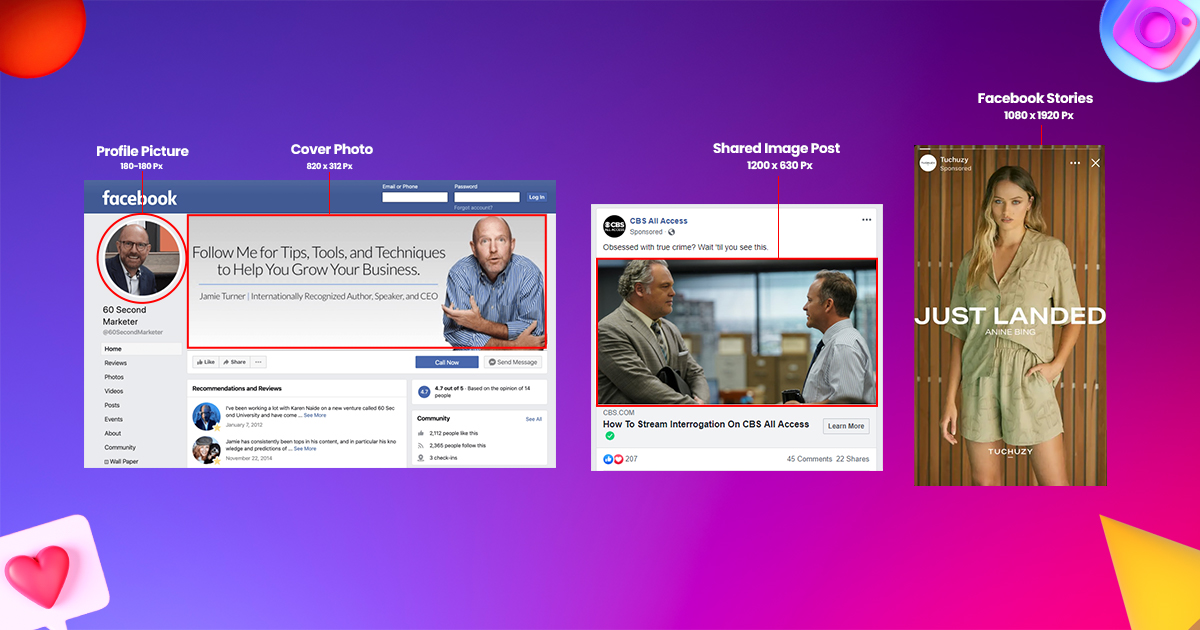
Instagram Image Sizes
Instagram’s visual-first nature makes image optimization a top priority. Use these dimensions to create scroll-stopping content:
Profile Picture
- Size: 320 x 320 pixels
- Display: Round format; center your logo or main focus for better visibility.
Post Sizes
- Square Posts: 1080 x 1080 pixels (1:1 aspect ratio)
- Portrait Posts: 1080 x 1350 pixels (4:5 aspect ratio)
- Landscape Posts: 1080 x 566 pixels (1.91:1 aspect ratio)
Instagram Stories and Reels
- Size: 1080 x 1920 pixels
- Pro Tip: Ensure the main focus is in the middle to avoid overlap with Instagram’s UI elements.

Related Blog: Instagram image size
Twitter Image Sizes
Twitter’s fast-paced environment thrives on visuals that grab attention immediately. To make your tweets stand out, follow these guidelines:
Profile Picture
- Size: 400 x 400 pixels
Header Image
- Size: 1500 x 500 pixels
- Best Practice: Use a high-resolution image that aligns with your brand’s tone.
In-Stream Images
- Size: 1200 x 675 pixels
- Pro Tip: Stick to a 16:9 aspect ratio for best results across devices.

Related Blog: How to get verified twitter
LinkedIn Image Sizes
As a professional platform, LinkedIn demands clean, high-quality visuals. Here’s how to get it right:
Profile Picture
- Size: 400 x 400 pixels for personal profiles; 300 x 300 pixels for company pages
- Tip: Use a professional headshot or logo.
Background Image
- Size: 1584 x 396 pixels
- Pro Tip: Keep your design minimal yet impactful, with a focus on your brand identity.
Post Images
- Size: 1200 x 627 pixels
- Tip: Use high-resolution images to maintain sharpness across devices.
LinkedIn Stories
- Size: 1080 x 1920 pixels
- Aspect Ratio: 9:16
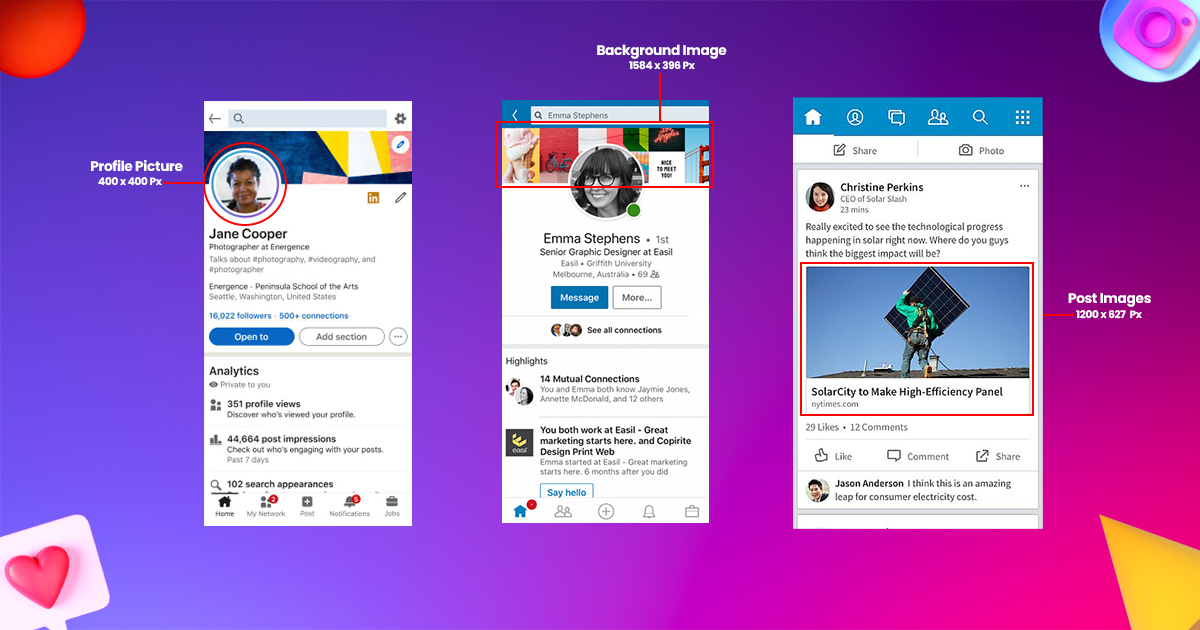
Pinterest Image Sizes
Pinterest is a visual discovery platform where optimized images can drive massive traffic to your website. Stick to these sizes:
Profile Picture
- Size: 165 x 165 pixels
Pin Image
- Size: 1000 x 1500 pixels (2:3 aspect ratio)
- Pro Tip: Long, vertical images perform best on Pinterest’s layout.
Board Cover Image
- Size: 222 x 150 pixels

YouTube Image Sizes
Though video-focused, YouTube also relies heavily on thumbnails and channel art. Properly optimized images help boost your brand’s visibility.
Channel Profile Picture
- Size: 800 x 800 pixels
Channel Art
- Size: 2560 x 1440 pixels
- Safe Zone: Ensure key elements fall within the central 1546 x 423 pixels.
Video Thumbnails
- Size: 1280 x 720 pixels
- Pro Tip: Use bold text and compelling visuals to increase click-through rates.
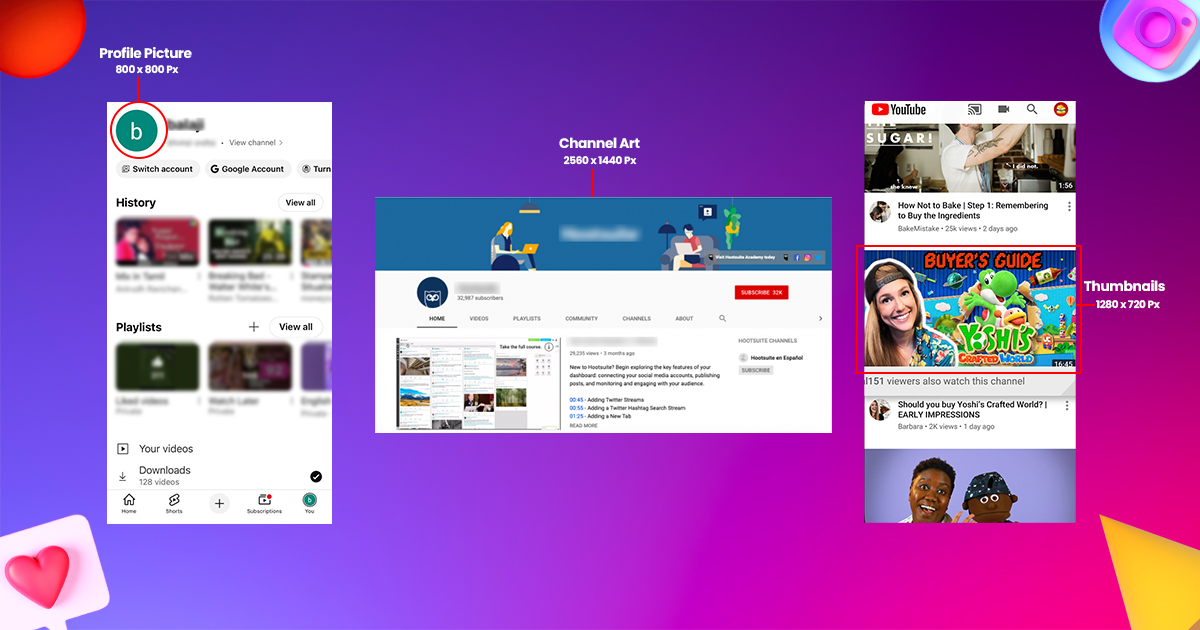
TikTok Image Sizes
TikTok focuses on short, engaging video content, but the right visuals make a significant impact.
Profile Picture
- Size: 200 x 200 pixels
Video Dimensions
- Size: 1080 x 1920 pixels
- Aspect Ratio: 9:16
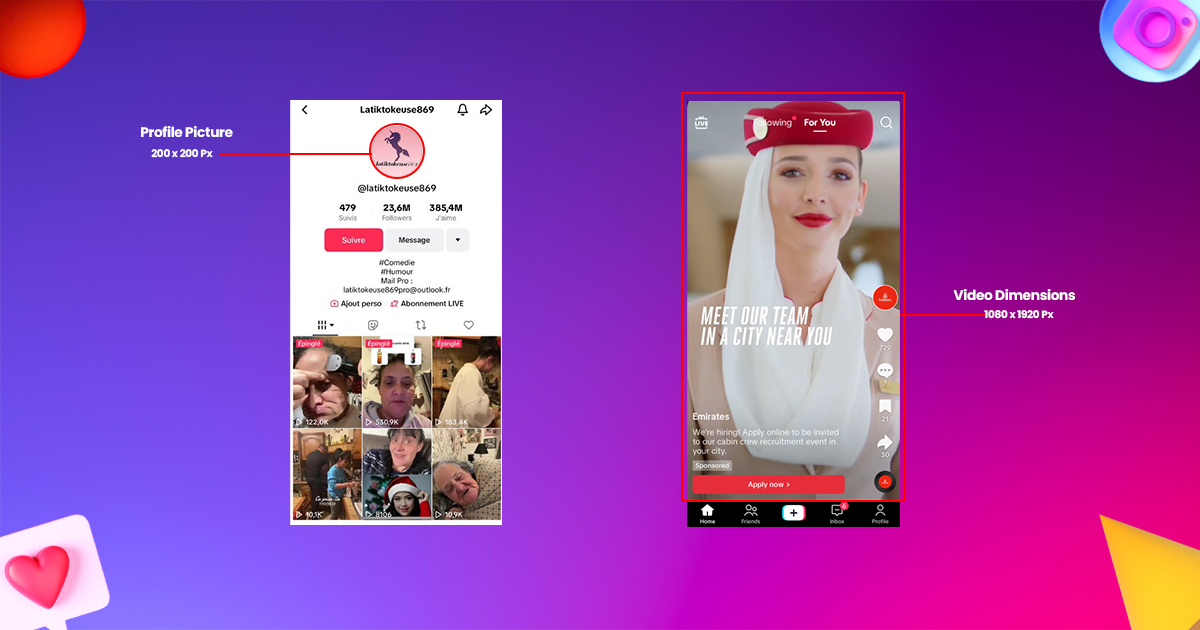
Pro Tip: Avoid placing text near the edges, as TikTok’s UI may overlap these areas.
Snapchat Image Sizes
Snapchat is all about vertical, full-screen experiences. Use these dimensions for best results:
Snapchat Stories and Ads
- Size: 1080 x 1920 pixels

Best Practices for Social Media Image Optimization
1. Maintain high resolution
Avoid blurry scenes by uploading high-quality images. Use a file format like PNG or JPEG for maximum clarity.
2. Customize file size
Compress images using a tool like TinyPNG or ImageOptim to reduce loading times without sacrificing quality.
3. Stick to the aspect ratio
Image cropping platform according to aspect ratio Double check to make sure your material is properly aligned.
4. Test across devices
Always preview your content on desktop and mobile devices to ensure it looks great everywhere.
5. Use as little text as possible
Avoid cluttering your scene with too much text. Emphasize bold, legible text if necessary.
Enhance Image Quality for Social Media
If you want to make your social media posts look more vivid and eye-catching, use an image enhancement tool like X-Design photo enhancer to increase image quality online with AI. X-Design allows you to fix a blurry photo online and turn low-quality images into professional images. The tool works great for different occasions, whether you want to restore old photos, fix blurry photos, or make the images look more professional and polished.
Tools for Resizing Social Media Images
Save time and effort by resizing and designing your social media images using these tools:
- Canva: Create easy-to-use social media templates.
- Adobe Photoshop: Advanced Editing Options for Professionals
- Crello: Great for creating fast, high-quality designs.
- Fotor: Ideal for beginners who want a simple editing solution.
Conclusion
Optimizing your social media images is more than just a technical necessity. But it’s also an effective way to make your content stand out in a crowded feed. When following the platform-specific guidelines in this guide You will be able to increase your brand’s recognition and engagement rates. Remember that proper image size doesn’t just improve aesthetics. But it also helps communicate your message effectively.

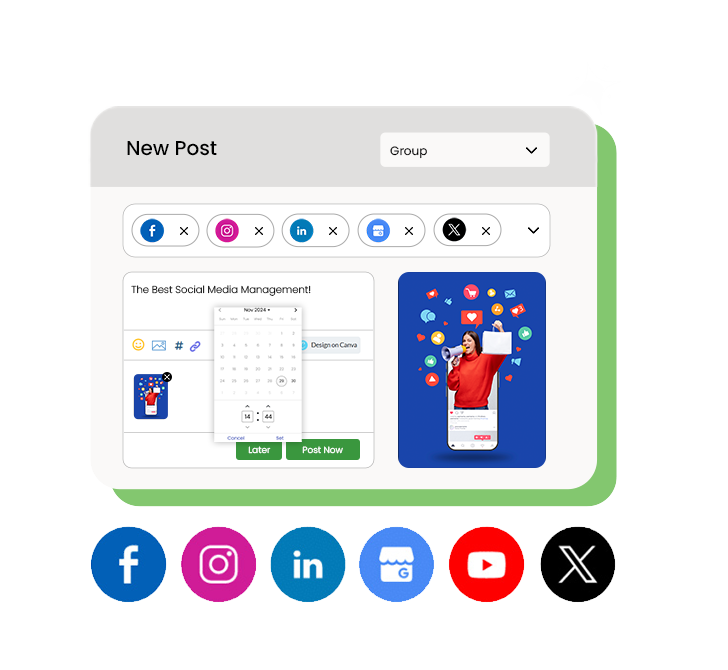

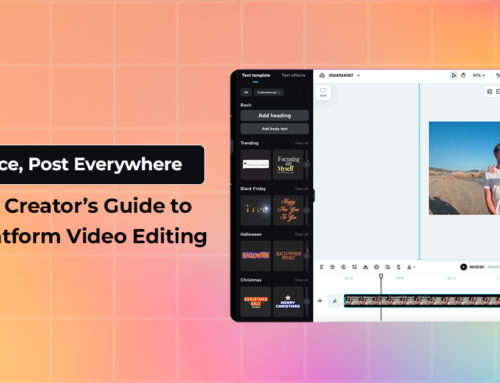

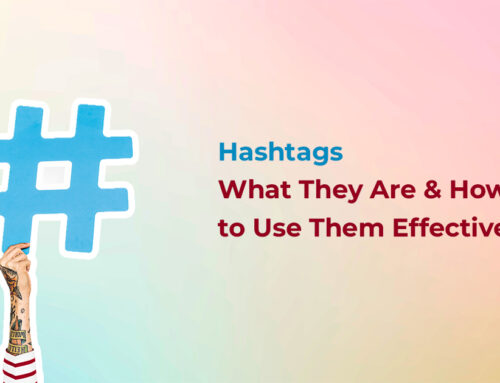

Leave A Comment